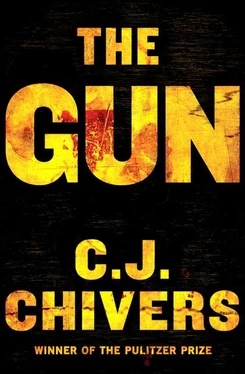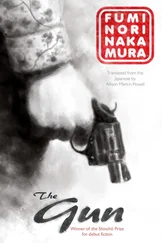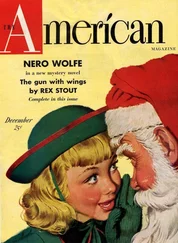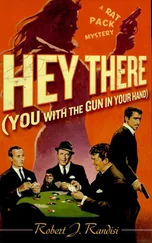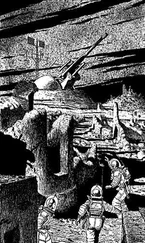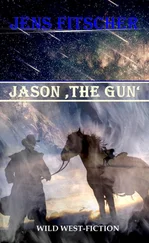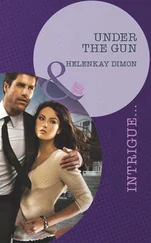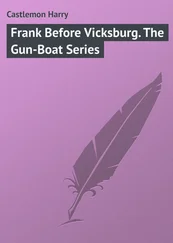Such an inquiry could begin at many points over a roughly one-hundred-year span. Here, it will start with Dr. Richard J. Gatling, whose invention in 1862 of the Gatling gun provided armies with their first reasonably effective rapid-fire arm—a massive, misunderstood, and often unwanted weapon that became the precursor to the rest. The early Gatling system weighed, more or less, a ton. It had no more mobility than an artillery piece, and required a crew of men to fire and a train of mules or horses to move about the battlefield. In its early forms it was temperamental, prone to jamming, and often despised by traditionalists who did not understand what it pointed to. And yet it was, in the history of conflict, of singular importance: Distinct shapes of modern war and instability can be traced through the miniaturization and proliferation that followed Gatling’s designs. In 1949, the Soviet selection of the AK-47 as its standard military arm marked a decisive moment in this evolution. A superpower had managed the effective miniaturization of a rapid-fire arm that could be wielded by a single man in almost all the typical situations in which a firearm might be useful. Gatling’s ton became, in a fully loaded Kalashnikov, about ten pounds—a weapon compact enough to be worn beneath a coat. To compete with this new weapon, combatants faced a choice. Either use the Kalashnikov, or come up with a rifle that could match it in a fight. War reorganized around Stalin’s gun.
Why does this remain a subject, more than half a century on? One weapon alone has been a consistently lethal presence in modern war: the infantry rifle. Tanks can rout conventional armies. GPS-guided ordnance can scatter combatants. Land mines, suicide bombers, and improvised explosives have attracted more attention in recent years. Yet the rifle remains preeminent. Whenever an idea organizes for battle it gathers around its guns. Few weapons are as accessible or can be as readily learned. No other weapon appears in as many conflict areas year after year. None is as sure to appear in each future war, if only because no other weapon is as well suited for as many missions and tasks. And of all the rifles available for war today, the Kalashnikov line stands apart as the most abundant and widely used rifle ever made. Virtually everyone has seen a Kalashnikov. With its stubby black barrel with a parallel gas tube above, its steep front sight post, and the distinctive banana clip, its unmistakable profile has become a constant presence in the news. It is the world’s most widely recognized weapon, one of the world’s most recognizable objects.
More than six decades after its design and initial distribution, more than fifty national armies carry the automatic Kalashnikov, as do an array of police, intelligence, and security agencies. But its fuller terrain lies outside the sphere of conventional force. The Kalashnikov marks the guerrilla, the terrorist, the child soldier, the dictator, and the thug—all of whom have found it to be a ready equalizer against morally or materially superior foes. A roster of its handlers holds a history of modern strife. Celebrated by Soviet propagandists as a tool for self-defense and liberation, its first lethal uses were for repression—crushing uprisings in East Germany in 1953 and in Hungary in 1956, and for shooting fleeing civilians trying to cross the Iron Curtain’s borders. Once it grew beyond border and crackdown duty in Eastern Europe, and became an automatic weapon for global combat service, it was instantly a groundbreaking firearm, a weapon that rearranged the rules. In the 1960s, when American Marines encountered AK-47s in urban warfare, at Hue City in Vietnam, they discovered that a single guerrilla with a Kalashnikov could slow a company’s advance; they used cannon to rubble buildings in which AK-toting Viet Cong marksmen hid. 4Its power, today a battlefield norm, was at first of an almost unseen sort, at least among the weapons that could be wielded by one man. Interest in it was immediate. Engineers in Finland and Josip Broz Tito’s Yugoslavia secured early versions of the weapon and developed unlicensed knockoffs straightaway. After leading the revolution that put him atop Cuba, Fidel Castro amassed stores of Soviet assault rifles and distributed engraved Kalashnikovs as gifts. Idi Amin armed his Ugandan forces with Kalashnikovs and appointed himself president for life. Yasir Arafat procured them for the PLO and the many terrorist groups that spread from Fatah. Since it first entered the martial consciousness, no matter the year or theater, the Kalashnikov has appeared. Its followers cross all lines. The Egyptian army outfitted itself with Kalashnikovs. Islamic Jihad used a Kalashnikov to assassinate the Egyptian president, Anwar Sadat. Its durability and availability have made it more popular with the passing of time; the great numbers of its manufacture and the multiple sellers offering it ultimately ensured that it would be turned against the army that created it, as was the case in the Soviet-Afghan War and then again in Chechnya.
By the 1980s, with several sources simultaneously arming both sides of the Afghan conflict, the country filled with AK-47s and their derivatives. A durable assault rifle can have many lives over the decades of its existence, and in Afghanistan the weapons were recycled repeatedly, passed from fighter to fighter by many means. In the Panjshir Valley, a chasm in the mountains north of Kabul, the rifle sometimes became a family heirloom. The valley had been the scene of some of the most intense fighting in the early years of the war; its canyons became backdrops for mujahideen legend. Several times the Soviet army thrust armored columns up the valley, sometimes enveloping the guerrillas by using helicopters to land troops on mountain passes to cut off withdrawing mujahideen. Each time the Soviet forces controlled territory briefly before being subjected to persistent attacks. The valley was never conquered, and its villages were never co-opted or tamed. First among the Soviet army’s foes was Ahmad Shah Massoud, the ethnic Tajik commander whose charisma and tactical adroitness became part of Afghan lore. Massoud’s fighters were fit and skilled. But they too suffered. After one Soviet incursion, Massoud attended the funeral of a dead guerrilla. He lifted the man’s Kalashnikov and carried it to the deceased man’s younger brother, Ashrat Khan. The commander’s mastery of quiet ceremony, like his sense for tactics, had reached a high state of polish.
“Do you want to be a mujahid?” Massoud asked.
Ashrat Khan extended his hands. He accepted the rifle.
“Yes, I am going to take my brother’s weapon,” he said. “I am going to be with you.” 5
At moments such as these, the Kalashnikov’s infiltration of the martial world was nearing completion. Afghans were using it for the same purpose that Mikhail Kalashnikov insisted had motivated him—to defend their native land. Ashrat Khan became a fighter. He eventually lost his brother’s Kalashnikov in combat, but he obtained another and survived the war.
The rifle assumed uses that were at once soldierly and ceremonial, and over the decades it reached far beyond conflicts in which the Kremlin played a primary role. When Sheik Ahmed Yassin, the founder of Hamas, was mourned in 2004 by his followers in Gaza, his casket was guarded by masked men at the ready with folding-stock AKs. The scene was a throwback. Six years earlier along the Cambodian-Thai border the body of Pol Pot was attended by teenage gunmen carrying an Asian version of the same gun.
Mastering a Kalashnikov is one of the surest ways to become an underground fighter in our time. In Belfast both sides of the Irish question used them in clashes and political art. In Afghanistan and Pakistan student notebooks from al Qaeda camps showed that the opening class in jihad curricula was a lesson on Kalashnikov’s avtomat. Along with the rocket-propelled grenade, the portable mortar tube, and the makeshift bomb, the automatic Kalashnikov completes the quartet of weapons for the resistance in Afghanistan and Iraq, where insurgents rely on the local version, the Tabuk, which was churned out in the 1970s and 1980s in a state-owned Iraqi factory with Yugoslav technical help, then cached throughout the country before American tanks rolled in from Kuwait. No pariah seems far from his personal inventory of this dated Russian design. In his first taped message after the attacks of September 11, 2001, Osama bin Laden held a microphone near his beard and told the world that “the winds of faith and change have blown.” It was his movie, he could put in it anything he wanted. Beside him was a Kalashnikov leaning against a rock.
Читать дальше
